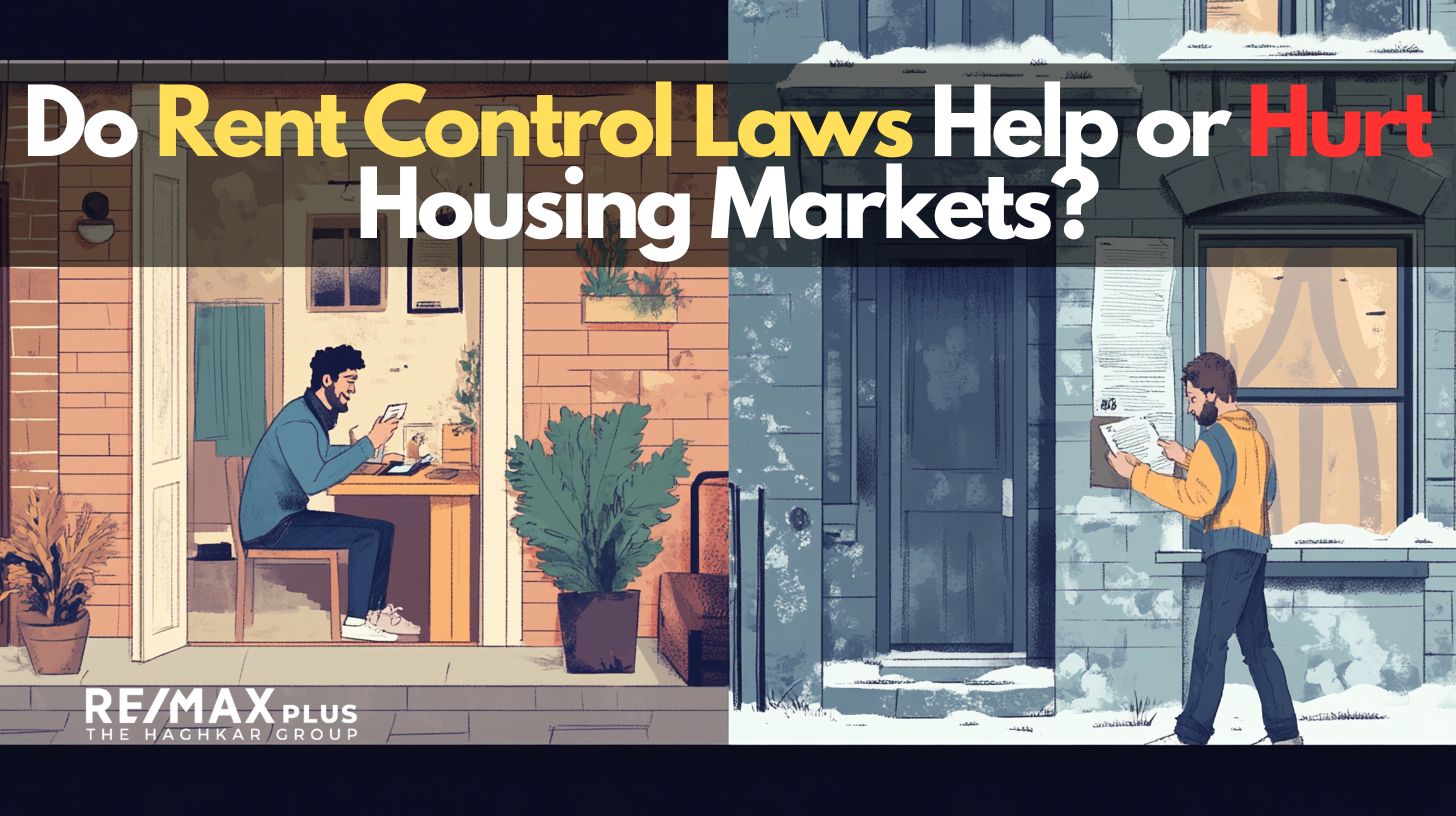
18 Apr Do Rent Control Laws Help or Hurt Housing Markets?
Rent control is one of the most hotly debated policies in housing. Supporters see it as a necessary tool to protect tenants from skyrocketing rents and housing insecurity. Critics argue it discourages investment, limits supply, and ends up hurting the very people it aims to help. So, what’s the real impact? Do rent control laws help or hurt housing markets?
The answer is complex. While rent control may offer short-term relief to tenants, it can also have long-term consequences for housing supply, affordability, and overall market health. In this blog post, we’ll take a deep dive into what rent control is, how it works, and the arguments on both sides of the issue—backed by data and real-world examples.
What Is Rent Control?
At its core, rent control refers to government regulations that limit how much landlords can increase rent. These laws are designed to keep housing costs stable for tenants, especially in cities where demand far exceeds supply.
There are two main types of rent regulation:
Rent Control (Strict): This is the traditional form of regulation that freezes rents or only allows minimal increases, often tied to inflation. In some cases, rents can only rise by a small percentage per year, regardless of market conditions.
Rent Stabilization (Moderate): A more flexible system where rent increases are capped but not completely frozen. Landlords may be allowed to raise rents based on a set formula or through government approval.
Rent control typically applies only to certain types of housing, such as buildings constructed before a specific year or units not owner-occupied. Newer buildings are often exempt to avoid discouraging new development.
The Case for Rent Control: Tenant Protection and Stability
Proponents of rent control believe it is an essential policy for maintaining housing affordability and community stability, especially in cities with soaring living costs.
1. Prevents Displacement
Rent control can help prevent long-term tenants from being pushed out of their homes due to sudden or excessive rent hikes. This is particularly important for low- and middle-income families, seniors, and vulnerable populations.
In cities like San Francisco or New York, where market-rate rent has doubled or tripled over the past two decades, rent control provides a critical buffer against gentrification and displacement.
2. Offers Predictability and Security
Knowing that your rent won’t jump 20% next year allows tenants to plan for the future. This sense of stability is crucial for families with children in school, people with fixed incomes, or anyone trying to build long-term roots in a community.
3. Maintains Diversity in Urban Areas
Without rent control, lower-income residents can be priced out of desirable neighborhoods. Over time, this can lead to economic and racial segregation. Rent control helps preserve socioeconomic diversity by allowing people of different income levels to live in the same area.
4. Reduces Homelessness Risk
High and rising rents are a major factor contributing to homelessness. Rent control can reduce this risk by ensuring that more people can afford to stay in their homes.
The Case Against Rent Control: Supply Constraints and Market Distortion
Critics of rent control argue that while the intentions are noble, the policy often backfires—leading to fewer rental units, lower-quality housing, and distorted market dynamics.
1. Discourages New Construction
When rent prices are capped, developers may see less profit potential and choose not to build new rental housing. In markets already suffering from supply shortages, this makes the problem worse.
A 2019 study from Stanford University found that San Francisco’s rent control expansion in the 1990s reduced rental housing supply by 15 percent, as landlords either converted units to condos or avoided new construction.
2. Encourages Conversion and Deregulation
Landlords may respond to rent control by converting rental units into owner-occupied housing, condos, or short-term rentals—all of which take properties off the long-term rental market.
In extreme cases, landlords may even choose to keep units vacant rather than deal with strict regulation and limited returns.
3. Leads to Maintenance Issues
If landlords can’t raise rents to cover inflation, taxes, or repair costs, they may cut corners on maintenance or let buildings deteriorate. This leads to a decline in overall housing quality and safety.
In older cities like New York, some rent-controlled buildings have fallen into disrepair because owners couldn’t afford to maintain them under the rent ceiling.
4. Creates Inequities Among Renters
Ironically, rent control can benefit wealthier tenants who happen to secure a rent-controlled unit, while newer, lower-income renters pay market rates or are not seen as “ideal tenants” based on their income and credit. This is especially the case in jurisdictions that combine rent control laws with heavily tenant favored laws restricting the ability to evict tenants who stop paying rent. In these areas landlords tend to screen for high income earners with flawless credit to to reduce their risk for a tenant claiming they have the inability to pay rent. Since evictions in these areas can take years to work through the courts, it leaves landlords with little choice but to screen for top tier tenants. Over time, this can create a two-tiered system where long-term tenants pay drastically less than their neighbors— as well as an a class of people who have extremely difficult time finding a landlord willing to rent to them at all. Experts contribute this unintended side effect to the local rental laws as one of the main drivers in the California homeless crisis.
Real-World Examples: What We’ve Learned So Far
New York City
New York has one of the most well-known and oldest rent regulation systems in the country. While it has protected many long-term tenants, it has also created an unusual market dynamic where some renters pay $800 for an apartment while the one next door rents for $3,500.
Landlords often try to circumvent rent control by converting buildings, raising rents through loopholes, or lobbying for deregulation.
San Francisco
Another rent control pioneer, San Francisco has struggled with balancing tenant protections and housing supply. While the policy has helped some residents stay put, critics argue that strict rent control has contributed to a housing shortage, leading to even higher market-rate rents citywide.
Cambridge, MA
In the 1990s, Cambridge repealed its rent control laws. Studies showed a surge in property values and new development afterward, but also a spike in rents. The repeal helped reinvigorate the market but created challenges for low-income renters.
Is There a Middle Ground?
Yes. Many experts and housing advocates believe that the best approach is a balanced policy—one that includes some rent stabilization, but also incentives for new construction and landlord participation.
Potential Solutions Include:
Targeted rent stabilization, allowing for moderate rent increases while protecting vulnerable tenants.
Incentives for developers, such as tax credits or streamlined approvals for affordable housing projects.
Means-tested assistance, where rental subsidies are provided to those who need it most, rather than blanket price caps.
Stronger tenant protections against eviction, discrimination, and exploitative lease practices, separate from rent control.
Final Thoughts: Help or Harm? It Depends
So, do rent control laws help or hurt housing markets?
The answer lies somewhere in between. Rent control can be a lifeline for tenants in high-cost cities, offering stability and protection in a volatile market. But if implemented too aggressively, it can deter investment, reduce supply, and distort rental markets in the long run.
The key is finding a balanced policy that protects tenants without stifling the creation of new, quality housing. Instead of an all-or-nothing approach, cities may benefit most from hybrid models that combine moderate rent regulation, targeted subsidies, and strong incentives for building more homes.
At the end of the day, rent control is not a silver bullet—but it’s also not the villain it’s sometimes made out to be. It’s a tool. The challenge is using it wisely.

